#Preondactylus
Text

DID IT! Beans updated~
From the top:
Yutyrannus - Talbot
Parasaurolophus - Niobe
Ceratosaurus - Charri
Dilophosaurus - Notch
Tenontosaurus - Leffy <3
Styracosaurus - Penma
Pachycephalosaurs - Siwa
Deinonychus - Nevr
Cryolophosaurus (juvie) - Acer
Velociraptor - Pidge
Sinosauropteryx - Sinno
Preondactylus - Cricket
I want to say I'm done for now....but last time I said that I added a handful more so. Who knows lol
#[ akat art ]#[dino]#dinosaur#doodling#paleoart#Yutyrannus#Parasaurolophus#Ceratosaurus#Dilophosaurus#Tenontosaurus#Styracosaurus#Pachycephalosaurs#Deinonychus#Cryolophosaurus (juvie)#Velociraptor#Sinosauropteryx#Preondactylus#WHEEZE#this took me a bit longer than I thought#but I managed to force my brain back into a low-stress-doodle mode#character height chart
28 notes
·
View notes
Text
picking these 10 was very difficult there are too many triassic weirdos and I'm not even touching the sea right now
125 notes
·
View notes
Text

#art#fan art#my art#digital art#dinosaurs#palaeontology#science#Preondactylus#Pterosaur#pterodactyl#Sai#Palaeo#palaeoblr#palaeoart
401 notes
·
View notes
Text
Hours after his boat was attacked by a kraken, Woodman's head is found by a flock of Preondactylus

1 note
·
View note
Link

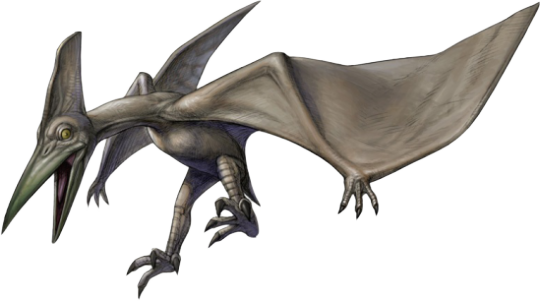
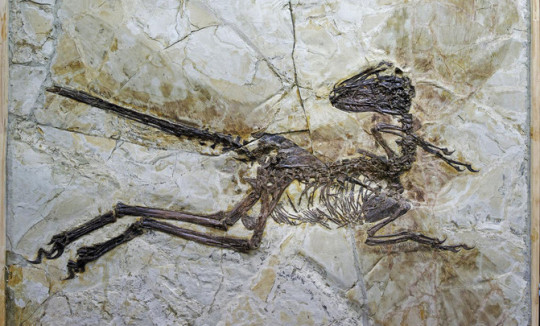


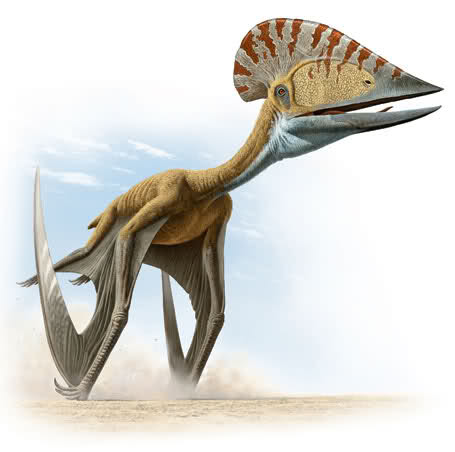

#Fotosdelanaturaleza#dimorphodon#dinosauriosvoladores#vertebrados#vertebradosvoladores#reptilesvoladores#Dorygnathus#Germanodactylus#Preondactylus#Pterosaurios
0 notes
Text
Drepanosaurus unguicaudatus
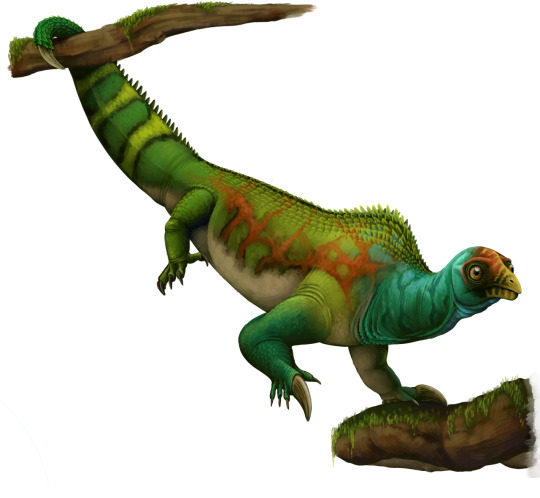
By Scott Reid
Etymology: Sickle Reptile
First Described By: Pinna 1979
Classification: Biota, Archaea, Proteoarchaeota, Asgardarchaeota, Eukaryota, Neokaryota, Scotokaryota, Opimoda, Podiata, Amorphea, Obazoa, Opisthokonta, Holozoa, Filozoa, Choanozoa, Animalia, Eumetazoa, Parahoxozoa, Bilateria, Nephrozoa, Deuterostomia, Chordata, Olfactores, Vertebrata, Craniata, Gnathostomata, Eugnathostomata, Osteichthyes, Sarcopterygii, Rhipidistia, Tetrapodomorpha, Eotetrapodiformes, Elpistostegalia, Stegocephalia, Tetrapoda, Reptiliomorpha, Amniota, Sauropsida, Eureptilia, Romeriida, Diapsida, Neodiapsida, Sauria, Archosauromorpha, Protorosauria?, Drepanosauromorpha, Elyurosauria, Drepanosauridae, Megalancosaurinae
Time and Place: 212 to 205 million years ago, from the Norian to the Rhaetian ages of the Late Triassic

Drepanosaurus is known from the Zorzino Limestone and Dolomia di Forni Formations of Italy, and the Siltstone and Petrified Forest Members of the Chinle Formation in New Mexico
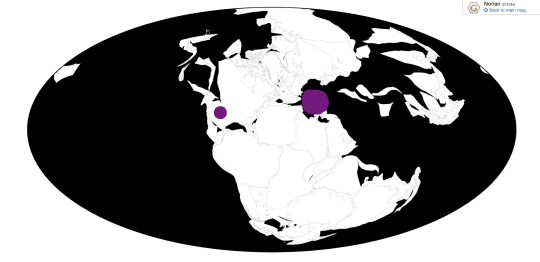
Physical Description: Drepanosaurus is the Titular Member of the Drepanosaurs, aka the “Monkey Reptiles”! These weirdos got their name for a reason - they were extremely well adapted for climbing trees, to the point of having prehensile tails like many monkeys. Drepanosaurus had a long, slender body, with a very long and thick tail for grabbing onto branches and moving around the forest. It had a long, thin neck and a small skull on the end of it, which was superficially similar to the skull of a bird - it was round on the back end, with huge eyes and a small pointed snout. Still, that head looked more like the head of a chick any number of nonavian dinosaurs, rather than like birds. It had long, robust limbs, with claws on the digits. Most notably, one front claw on each Drepanosaurus hand was huge, used for aiding in gripping branches more easily. It had an arched shoulder region, and in general very high spines on its vertebrae. This made it look quite odd indeed - a lumpy, lengthy reptile that sort of looks like what would happen if you tried to combine a woodpecker, a monitor lizard, a monkey, and a bison into one small reptilian creature that lived in the trees of the Triassic. It was weird, okay. It was just weird. The tail may have even ended in a claw - that’s right, a claw - to help it grab onto branches better. And all of this weirdness was packed into a body only about 45 to 50 centimeters long - a truly specialized representative of Triassic Oddities.
Diet: Drepanosaurus was most likely an insectivore, using the claws to help get out various insects from tree bark.
Behavior: Drepanosaurus was a weirdo, but a weirdo with a purpose. All of these weird traits came together in one wild animal to aid it in climbing among trees, gathering food, and moving nimbly in the forest. The small, pointed mouth aided in digging out food from crevices and burrows, which it could open up bigger using the large claws. Its long and skinny neck also helped it to reach spots where insects were hiding, rather than wasting energy to move its entire body to where food was on the tree. The large, splayed out feet and strong claws were able to wrap around tree trunks, gripping the wood tightly and helping Drepanosaurus stay stabilized. The prehensile tail helped Drepanosaurus go from branch to branch and move among the tree canopy, and the claw would help to keep the tail in place during particularly slippery or dangerous swings.
Ecosystem: Drepanosaurus lived in a variety of environments, most importantly the Triassic shores of Northern Italy, around tidal basins and seasonal lagoons. In the Zorzino beach formation, it shared its home with its close cousins, Megalancosaurus and Vallesaurus; as well as the early Pterosaurs Bergamodactylus, Peteinosaurus, and Eudimorphodon; the very long-snouted Phytosaur Mystriosuchus; the marine reptile Endennasaurus; the Placodont Psephoderma; the Aetosaur Aetosaurus; the Tuatara Diphydontosaurus; the Tanystropheid Langobardisaurus; and plenty of fish such as Legnonotus, Gibbodon, Sargodon, Pholidorhynchodon, Parapholidophorus, Pholidoctenus, Dapedium, Dandya, and the shark Pseudodalatias. This was a very active and diverse fauna, placing Drepanosaurus in one of the truly uniquely Triassic locations of the end of the Period.
Dolomia di Forni was no sneeze either, a Tidal Basin surrounded by coniferous trees. Here we have some preservation of things that Drepanosaurus was likely to eat, such as the spider Friularachne. There were also plenty of crustaceans, including decapods and crab like things that would have been crawling all over the tidal pools. Fish were very common too, such as the Coelacanth Holophagus, the sharp fish man Saurichthys, other Ray-Finned fish such as Eopholidophorus and Sargodon, the shark Pseudoalatias, and the Conodont Epigondolella. There was also the Tanystropheid Langobardisaurus again, as well as the other Drepanosaur Megalancosaurus. However, the true heroes of the environment were the early pterosaurs - the whole gang was there, including Preondactylus, Eudimorphodon, Austriadactylus, and Seazzadactylus. It was just a huge chaos of flying reptiles, which Drepanosaurus would have had a tough time avoiding!
Drepanosaurus has also been found in the Siltstone and Petrified Forest environments of the Chinle Formation in North America. Now, even in the context of Pangea this was a long distance away, but it’s possible they migrated there during the end of the Triassic period. These were thick coniferous forest environments with a severely dry and severely wet season, indicating that Drepanosaurus really adapted to a new cliimate, and quickly. Here there were famous animals such as the dinosaurs Coelophysis, Daemonosaurus, Chindesaurus, Tawa, the Silesaurid Eucoelophysis, the Lagerpetid Dromomeron, Pseudosuchians like Hesperosuchus, Effigia, Vivaron, and the Aetosaur Typothorax; the swimming Archosauromorph Vancleavea, Tuataras like Whitakersaurus, Phytosaurs like Redondasaurus and Rioarribasuchus, and even other Drepanosaurs like Avicranium (which might actually be what all the specimens of Drepanosaurus in the Chinle are, so take this with a grain of salt). This is a very diverse ecosystem that has been touched on elsewhere on WTF Triassic, so I will leave it at that!
Other: Oh ye Drepanosaurs. With heads so birdlike and bodies so weird. Much like other triassic weirdos, BANDits (“scientists” who insist, though literally all evidence points to the contrary, that birds could not have evolved from dinosaurs), you have been fodder for speculation for ages. However, you have almost nothing in common with birds - even the skull is only similar on the outside, and lacks many of the features seen in bird skulls (that are, however, found in dinosaur skulls). In fact, many of these creatures were grouped together in a group called Avicephala, which was eventually abandoned as it was found that most of them were not closely related. That said, it was then found that Drepanosaurs were Archosauromorphs, showing that weird arboreal lifestyles were a trend in the Ruling Reptile group, rather than a unique feature of the birds. Though, it is possible that Drepanosaurs are actually very early Diapsids (reptiles proper), and thus may have evolved as early as the Permian - and somehow survived into the Triassic. More fossils are needed, but for now, they remain a fascinating and unique Triassic group, highlighting the weirdness of this timeperiod in a way few other animals can.
~ By Meig Dickson
Sources Under the Cut
Carroll, R. L. 1988. Vertebrate Paleontology and Evolution 1-698.
Colbert, E. H. 1947. The little dinosaurs of Ghost Ranch. Natural History 59(9):392-399-427-428.
Dalla Vecchia, F. M. 1991. Notes on the stratigraphy, sedimentology and paleontology of the Dolomia di Forni (Upper Triassic) of the Rio Seazza Valley (Preone, Friuli-Venezia Giulia)]. Gortania - Proceedings of the Friulian Museum of Natural History 12 (90) : 7-30.
Irmis, R. B., S. J. Nesbitt, K. Padian, N. D. Smith, A. H. Turner, D. T. Woody, and A. Downs. 2007. A Late Triassic dinosauromorph assemblage from New Mexico and the rise of dinosaurs. Science 317:358-361.
Harris, J. D., A. Downs. 2002. A drepanosaurid pectoral girdle from the Ghost Ranch (Whitaker) Coelophysis Quarry (Chinle Group, Rock Point Formation, Rhaetian), New Mexico. Journal of Vertebrate Paleontology 111: 247 - 264.
Pinna, G. 1979. Drepanosaurus unguicaudatus, nuovo genere e nuova specie di Lepidosauro del trias alpino. Atti della Societa Italiana di Scienze Naturali e del Museo Civico di Storia Naturale di Milano 121: 181 - 192.
Pinna, G. 1986. On Drepanosaurus unguicaudatus, an Upper Triassic lepidosaurian from the Italian Alps. Journal of Paleontology 60 (5): 1127 - 1132.
Pinna, G. 1988. Un nuovo esemplare giovanile di Drepanosaurus unguicaudatus del Norico di Val Preone (Udine) [A new juvenile specimen of Drepanosaurus unguicaudatus from the Norian of the Preone Valley, Udine]. Atti della Società Italiana di Scienze Naturali - Museo civico di Storia Naturale di Milano 128:80-84.
Pinna, G., and S. Nosotti. 1989. Anatomia, morfologia funzionale e paleoecologia del rettile placodonte Psephoderma alpiunum Meyer, 1858. Memorie della Società Italiana di Scienze Naturali e del Museo Civico di Storia Naturale de Milano 25(2):1-50.
Pritchard, A. C., S. J. Nesbitt. 2017. A bird-like skull in a Triassic diapsid reptile increases heterogeneity of the morphological and phylogenetic radiation of Diapsida. Open Science 4 (10): 170499.
Renesto, S. 1994. The shoulder girdle and anterior limb of Drepanosaurus unguicaudatus (Reptilia, Neodiapsida) from the Upper Triassic (Norian) of Northern Italy. Zoological Journal of the Linnean Society 111 (3): 247 - 264.
Renesto, S., J. A. Spielmann, S. G. Lucas, G. T. Spagnoli. 2010. The Taxonomy and paleobiology of the Late Triassic (Carnian-Norian: Adamnian-Apachean) drepanosaurs (Diapsida: Archosauromorpha: Drepanosauromorpha). New Mexico Museum of Natural History and Science Bulletin 46: 1 - 81.
Senter, P. 2004. Phylogeny of Drepanosauridae (Reptilia: Diapsida). Journal of Systematic Palaeontology 2(3):257-268.
Stefani, M., P. Arduini, A. Garassino, G. Pinna, G. Teruzzi, G. L. Trombetta. 1991. Palaeoenvironment of extraordinary fossil biotas from the Upper Triassic of Italy. Atti della Societa Italiana di Scienze Naturali e del Museo Civico di Storia Naturale di Milano 132 (24): 309 - 335.
#drepanosaurus#drepanosaur#diapsid#triassic#triassic madness#triassic march madness#prehistoric life#paleontology
281 notes
·
View notes
Text
I FINALLY got some time to do digital art again and believe me I just let out the biggest preondactylus screech ever just
#you know whats better than sex???#BEING ABLE TO DO DIGITAL STUFF AGAIN AFTER A WHOLEASS YEAR BOIIIIIIIIII#im emotional#random talk#life update
2 notes
·
View notes
Photo

Posting this here because I think it'll be awhile before I'm willing to put these on another blog. Preondactylus going for a walk.
339 notes
·
View notes
Text

I needed some low stress doodles and ended up making little crayon style chibis of all my dinosaurs <33
They ended up as great little avatars for my toyhouse folder lol I have three more dinosaurs that are WIPS, so I'll probably end up adding them later (Spinosaurus, parasaurolophus & dilophosaurus)
The kids:
Penma~ the old lady styracaceous / ceratopsian mix
Bananana Ceratosaurus Charri
New best fluffsy Tyrannosaurus Pink~
Siwa my cactus carrying pachycephalosaurs
Pidge the brightly feathery fluff velociraptor
Talbot a good ol fluffy Yutyrannus
Nevr~ Deinonychus; the true clever girl
Leffy best Tenontosaurus, aka pure joy
precious bby Acer, a maple leaf Cryolophosaurus
Sinno! Lil herb collector Sinosauropteryx
Fisch, a happy flappy Tapejara gal <3
Itty bitty baby Cricket, Preondactylus bean
#[ akat art ]#[dino]#dinosaur#tenontosaurus#styracaceous#ceratopsian#Ceratosaurus#Tyrannosaurus#pachycephalosaurs#velociraptor#Yutyrannus#Deinonychus#Tenontosaurus#Cryolophosaurus#Sinosauropteryx#Tapejara#Preondactylus#SO MANY GOOD KIDS!#I love them so much#everytime I come across a new dinosaur design I'm blown away
2 notes
·
View notes
Text
Preondactylus bufarinii
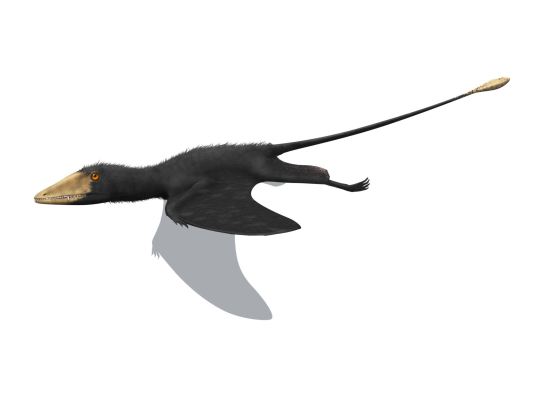
By Chris Masnaghetti, retrieved from http://www.pteros.com/, a website dedicated to education about Pterosaurs.
A reminder that we will not be able to do every pterosaur until we reach $240 in donations on our patreon, so please donate even a dollar if you can.
Name: Preondactylus bufarinii
Name Meaning: Preon Finger
First Described: 1983
Described By: Wild
Classification: Avemetatarsalia, Ornithodira, Pterosauromorpha, Pterosauria, Eupterosauria
HAPPY PTEROSAUR PTUESDAY!
Our first Pterosaur Proper! Preondactylus is one of the earliest known pterosaurs, and one of the earliest derived, indicating that the group probably originated in Europe - specifically, Italy, where many early Pterosaurs have been found (so we have Scleromochlus from Scotland and Preondactylus from Italy, and I’m half Scottish and half Italian... hmmm...). It is known from three specimens that shows it has very short wings, which seems to be the condition that early pterosaurs had, and longer wings would be evolved later.

By Nobu Tamura, CC BY 3.0
Preondactylus is known from most of the skeleton, but the back of the skull has not been preserved, though it can be reasonably reconstructed based on close relatives. It was originally classified as being closely related to Rhamphornychus, a pterosaur that, while early derived, isn’t earliest derived, and has since been reclassified. It lived close to the sea, and it had simple teeth, allowing for it to feed mainly on insects. It was found in the Dolomia di Forni Formation, in the Preone Valley of Italy, and it lived about 228 million years ago, in the Carnian age of the Late Triassic.
Sources:
https://en.wikipedia.org/wiki/Preondactylus
https://paleobiodb.org/navigator/
http://www.pteros.com/pterosaurs/preondactylus.html
Shout out goes to @zigzaggun!
#preondactylus#preondactylus bufarinii#pterosaur#palaeoblr#prehistoric life#paleontology#prehistory#biology#science#nature#factfile#pterosaur ptuesday
80 notes
·
View notes
Text
Dimorphodon macronyx, D. weintraubi
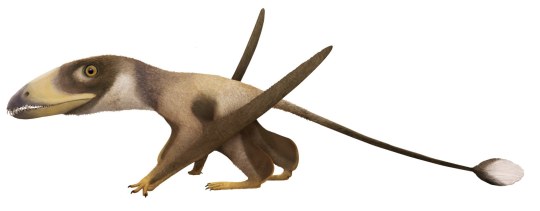
By Julio Lacerda, @paleoart, retrieved from http://www.pteros.com/, a website dedicated to education about Pterosaurs.
A reminder that we will not be able to do every pterosaur until we reach $240 in donations on our patreon, so please donate even a dollar if you can.
Name: Dimorphodon macronyx, D. weintraubi
Name Meaning: Two Form Tooth
First Described: 1859
Described By: Buckland
Classification: Avemetatarsalia, Ornithodira, Pterosauromorpha, Pterosauria, Macronychoptera, Dimorphodontia
Dimorphodon is one of the most famous early derived pterosaurs, but it is also closer to most pterosaurs than the ones we have looked at previously. The first major division of pterosaurs is between the Eupterosaurs and the Macronychopterans, with the Eupterosaurs being early forms such as Peteinosaurus, Eudimorphodon, and Preondactylus; and Macronychopterans including Dimorphodon and, essentially, the whole rest of Pterosaurs. Dimorphodonts are the first derived group of Macronychopterans, and Dimorphodon still retains a mixture of early pterosaurian traits, in addition to more derived ones. It’s name is derived from the fact that it has two different types of teeth - four or five fang like teeth followed by an indeterminant number of smaller ones.

By Mark Witton, CC BY 4.0
Despite its superficial similarity in the skull to that of puffins, it was probably not a fish eater. Dimorphodon’s skull was a bony head, where a puffin beak is mainly soft tissue. Dimorphodon also had broad, short wings, and would not have been suited to flying underwater and deep flying to catch fish, or even a very good flyer at all - flying like tinamous and woodpeckers, using short, frantic flapping. Instead, it’s very muscled limbs would have given it strong abilities in running, walking, and climbing. It was probably a good land animal, then, rather than being particularly strong in the air, eating small vertebrates and insects, or, as Mark Witton has argued, it could have been a specialized carnivore, eating small lizards and mammals. It also had a long tail, which was flexible at the base and stiffened for most of the rest of the length. It may have had a Ramphorhynchus-like tail vein at the end (a diamond structure), but no evidence of that is known.

By John Conway, CC BY-SA 3.0
Dimorphodon macronyx was found in the Jurassic Coast site by Mary Anning, living in the Hettangian to Sinemurian ages of the Early Jurassic, about 195 to 190 million years ago. Other specimens were found later, including in the La Boca Formation in Mexico which was named as a new species, D. weintraubi. D. weintraubi mainly differs from D. macronyx due to it’s size, and it’s foot indicates that it and other pterosaurs were plantigrade - walking on the whole foot - rather than digitigrade - walking on the toes - like dinosaurs. Even though it did not feed on marine animals, D. macronyx is primarily known from marine sediments and lived in the shoreline, island environments of Europe in the Jurassic; D. weintraubi may have lived in a less aquatic-based environment, having been found with many types of land organisms such as sphenodontians, dinosaurs, and mammaliaformes.
Sources:
http://www.pteros.com/pterosaurs/dimorphodon.html
https://en.wikipedia.org/wiki/Dimorphodon
Shout out goes to @thequasarflare-blog-blog-blog!
#dimorphodon#dimorphodon macronyx#dimorphodon weintraubi#pterosaur#pterosaur ptuesday#palaeoblr#thequasarflare-blog-blog-blog#paleontology#prehistory#prehistoric life#biology#science#nature#factfile
90 notes
·
View notes
Text
Austriadactylus cristatus

By Fabrizio De Rossi, retrieved from http://www.pteros.com/, a website dedicated to education about Pterosaurs.
A reminder that we will not be able to do every pterosaur until we reach $240 in donations on our patreon, so please donate even a dollar if you can.
Name: Austriadactylus cristatus
Name Meaning: Austria Finger
First Described: 2002
Described By: Dalla Vecchia et al.
Classification: Avemetatarsalia, Ornithodira, Pterosauromorpha, Pterosauria, Eupterosauria
Austriadactylus is another early derived Pterosaur, and comes from a similar location as Preondactylus - specifically, in the Seefelder Beds of Austria, indicating that pterosaurs first evolved in Europe. It lived in the Norian age of the Late Triassic, about 215 million years ago, and is known from a crushed partial skeleton. Unlike Preondactylus, it did have long wings, with a span of about 1.2 meters. It was still very small and had a long tail, which was flexible unlike the more stiffened tails of later early derived pterosaurs. It even had differently shaped teeth, indicating that it may have eaten a variety of prey types.
Sources:
http://www.pteros.com/pterosaurs/austriadactylus.html
Shout out goes to @lordbootington!
#austriadactylus#austriadactylus cristatus#pterosaur#palaeoblr#prehistoric life#paleontology#prehistory#biology#science#nature#factfile#pterosaur ptuesday
91 notes
·
View notes
